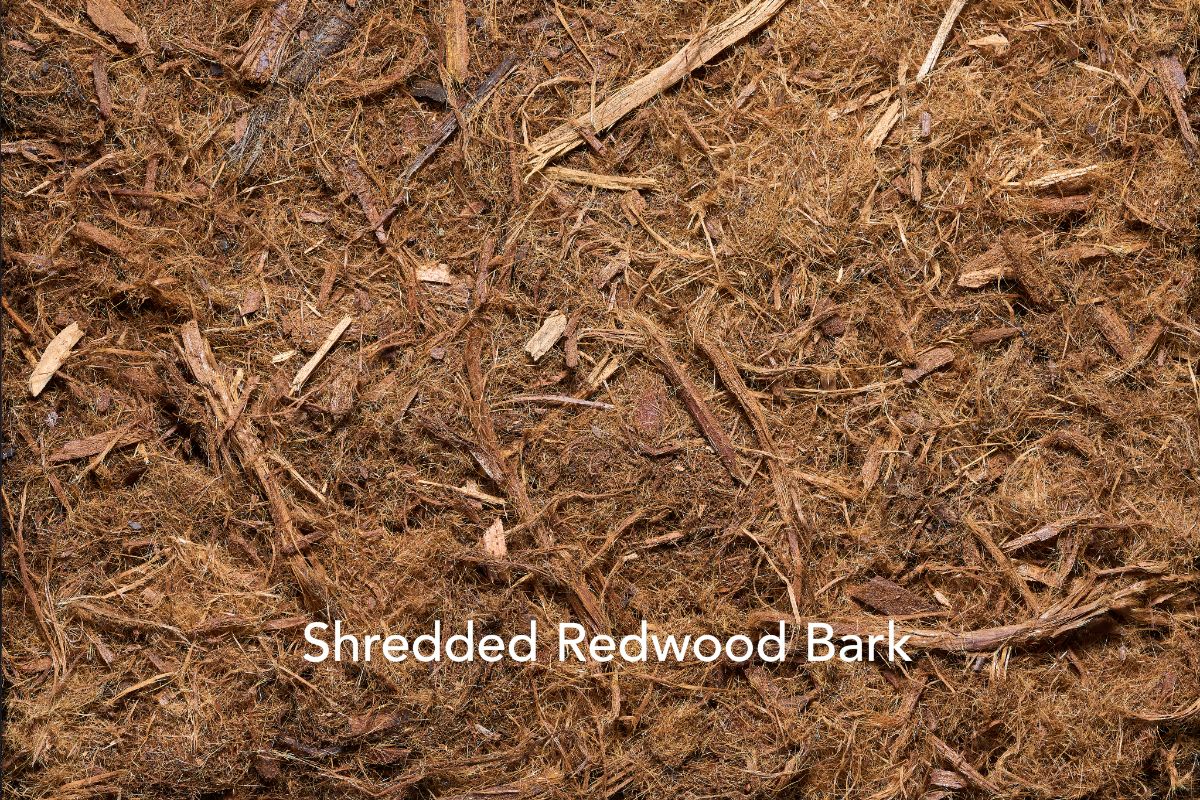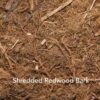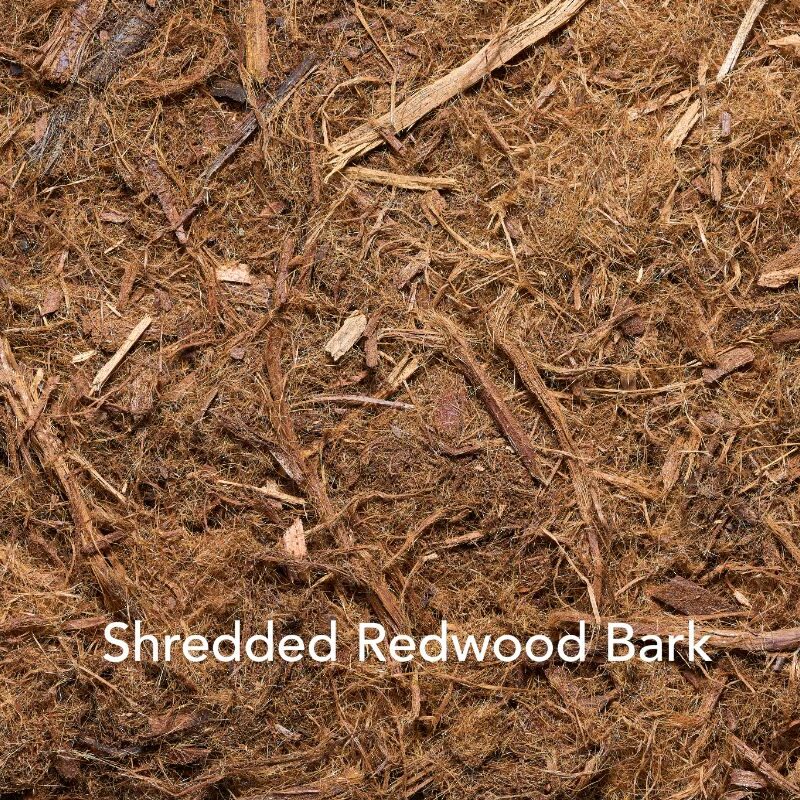Shredded Redwood Bark is the most fibrous of the barks. In the photo of this bark, one can easily see fine fiber making up most of it. The combination of its “hairy” texture and color has led to calling this mulch Gorilla Hair. It is best described as lightweight and fluffy. When it is spread as mulch, it has a lot of air space between the fibers. It may need to be tamped down a little, but many people leave it just as it is.
If you are looking for mulch on a hillside or embankment, shredded mulches are the answer. Thanks to the long intertwined fibers, they stay in place. They are also relatively good at weed suppression. Spread Shredded Redwood Bark as a 4” layer if your concern is weed suppression. Weeds have difficulty weaving through the fibrous matrix. An exception is the oxalis species, with clover-like leaves bearing yellow or pink flowers that are extremely common in the Bay Area during winter and spring. These plants produce bulbs that often remain in the ground after weeding and provide enough energy for the young plant growing from the bulb to work through the mulch. It is best to weed Oxalis when it produces flowers since most of the food in the bulb will have been used.
Shredded Redwood Mulch is not as effective in keeping an open soil surface as the two fine Fir Barks, but it is excellent in keeping the soil surface cool due to its insulating properties. There is little concern about water moving through the mulch and into the soil because the structure is open, and water freely flows through.
The two advantages of shredded bark are its stability on slopes and its ability to control weeds. This is true for both Shredded Redwood and Shredded Cedar.


